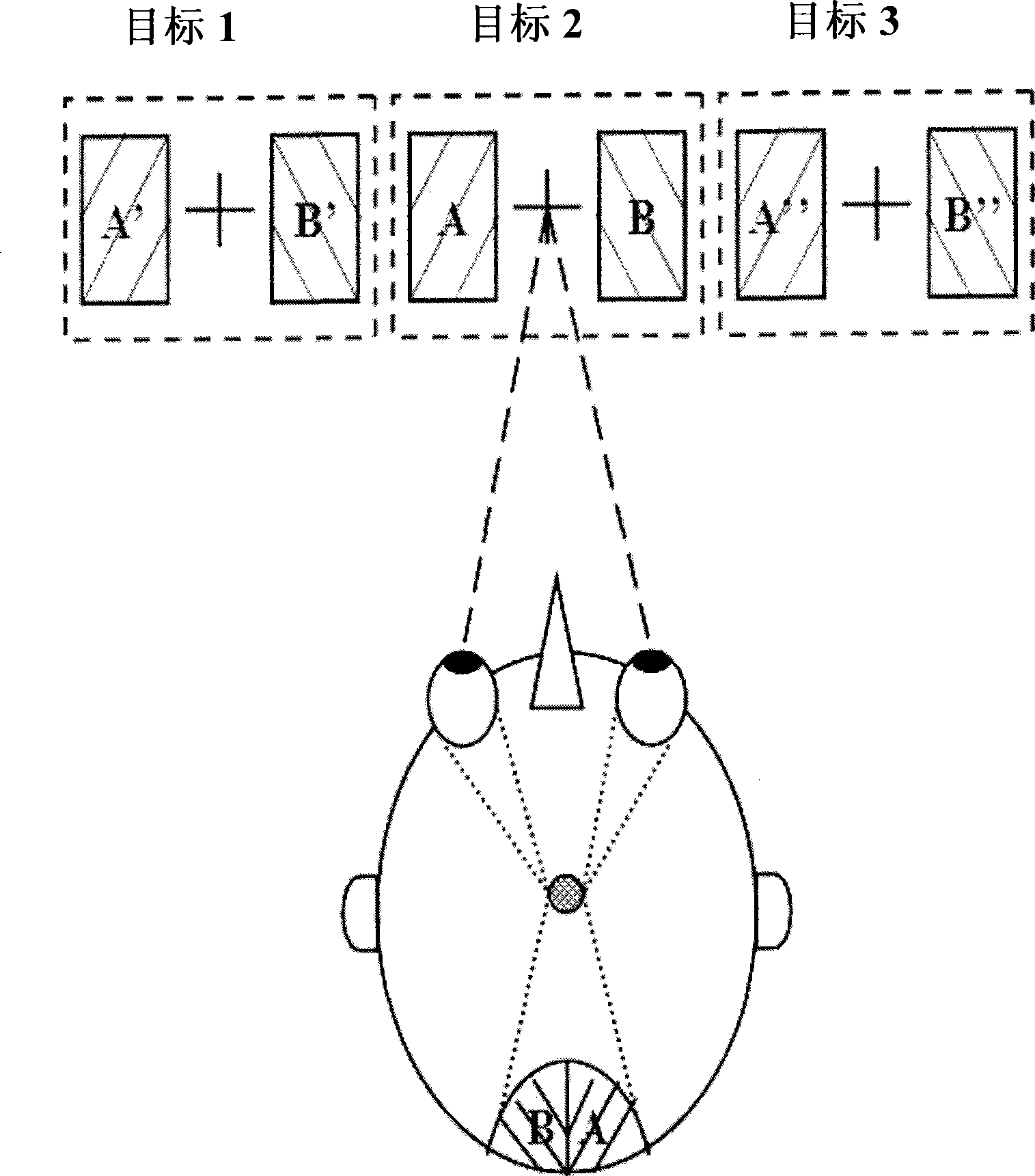Stable state vision inducting brain-machine interface method based on two frequency stimulation of left and right view field
A steady-state visual evoked, brain-computer interface technology, applied in the field of human-computer interaction, can solve the problems of increased selection levels, small selection range of excitation steady-state visual evoked potential frequency, increased user fatigue, etc., and achieves high transmission rate , the effect of simple equipment
- Summary
- Abstract
- Description
- Claims
- Application Information
AI Technical Summary
Problems solved by technology
Method used
Image
Examples
Embodiment Construction
[0026] The stimulation mode invented in this paper can be found in figure 1 shown. The distance between the stimulation blocks on the left and right sides of the cross is 0.5cm, and the size of the stimulation block is 3cm×6cm. The A stimulus block is located in the left visual field of the subject, and the B stimulus block is located in the right visual field. Two stimulus blocks are combined to form a target, and the subjects fixate on the position of the cross, while the conventional steady-state visually evoked BCI uses a frequency flicker block to present the target. According to the principle of visual field intersection in neuroscience, the frequency components of the two visual fields will be projected on the left and right halves of the occipital area of the brain respectively. The letters 'A' and 'B' in the figure indicate the corresponding relationship of projection.
[0027] Here we take the two frequencies of 14 and 18Hz as an example. Combining the two frequ...
PUM
 Login to View More
Login to View More Abstract
Description
Claims
Application Information
 Login to View More
Login to View More - R&D
- Intellectual Property
- Life Sciences
- Materials
- Tech Scout
- Unparalleled Data Quality
- Higher Quality Content
- 60% Fewer Hallucinations
Browse by: Latest US Patents, China's latest patents, Technical Efficacy Thesaurus, Application Domain, Technology Topic, Popular Technical Reports.
© 2025 PatSnap. All rights reserved.Legal|Privacy policy|Modern Slavery Act Transparency Statement|Sitemap|About US| Contact US: help@patsnap.com



